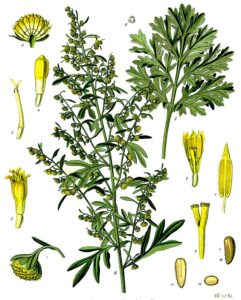Red or White? A Brief Guide to Selecting the Perfect Vermouth
5 February 2024
In the vast world of vermouth (or any other varied beverage), selecting the perfect bottle of vermouth rosso or blanco can be an exciting yet slightly puzzling task. From botanical blends to regional variations, the choices seem endless.

In this straightforward factual guide, we’ll navigate through the essential elements to consider when choosing a vermouth. Whether you choose a red vermouth (rosso) or white vermouth (blanco), this guide ensures that that your selection aligns with your taste preferences, elevates your cocktail experience and most importantly, ensures a good time.
The Basics
Vermouth is a fortified wine infused with a myriad of botanicals, including a variety of herbs, spices, fruits and roots. The two main categories are sweet (rosso or red) and dry (bianco, blanco or white), each offering distinct flavour profiles.
Its name is apocryphally thought to be derived from the Old English word wermod, which you may know as wormwood, the plant which is most known for its use in absinth. The wormwood adds a mild bitter taste.
Vermouth includes a small hint of its namesake plant, it is also infused with a myriad of other ingredients. Furthermore, vermouth is nowhere near as alcoholic as the infamous absinthe, resulting in a lighter and more pleasant experience.
According to EU law a vermouth must consist of at least 75% wine, have an alcohol percentage (ABV) of at between 14.5 to 22% and it must contain at least one herb from the artemisia family, which is commonly wormwood. Readers should be aware that US regulations have a looser definition of vermouth, which is a wine that is fortified with a much stronger spirit and has an alcohol content of at least 15%. American producers are free to experiment with herbs and bittering agents which do not necessary include herbs from the artemisia family including wormwood.
Sweetness Levels
Sweetness is a crucial factor when selecting a vermouth. Sweet vermouths, often referred to as rosso, bring a rich and full-bodied sweetness to cocktails.
Dry white vermouths, or blanco, exhibit a crisper and less sweet character. Classic cocktails such as the Manhattan and Boulevardier often feature sweet red vermouth. It is also used as a post-meal digestif.
Botanical Profiles and Flavour Complexity
The botanical blend in vermouth is the key to its flavour complexity. Different brands use unique combinations, resulting in a diverse range of flavour profiles.
Exploring the botanical nuances allows you to tailor your selection to match your palate, whether you prefer herbal richness, citrus notes, or a balance of various botanical elements. We choose to infuse our red vermouth with bitter orange peel, immortelle, timur pepper, orris and ginger. Our white vermouth includes bergamot, mandarin, and melon with hints of bitter orange and grapefruit pith.
Regional Distinctions
Vermouth is crafted globally, and each region imparts its distinct influence on the final product.
Italian vermouths have a reputation for being sweeter and having a dark brown or deep red colour. They are often served as aperitifs with desserts or for making sweet cocktails.
On the other hand, French vermouths have a reputation for being drier. This type of vermouth is frequently is used in the cooking of fish dishes such as pies and stews.
Understanding regional distinctions provides insights into the stylistic and utility preferences of different vermouth-producing regions, helping you choose a bottle that resonates with your taste.
Quality Indicators and Brand Reputation
Quality vermouth is often associated with brands that prioritise premium ingredients and thoughtful production methods, which seek to preserve the best of tradition. Fact-checking brand reputations through reviews, awards, and industry recognition ensures that you purchase only the best quality product, which meets strict European Union quality guidelines.
Our Bianco Vermouth has been awarded the gold medal in the ‘Wine-Based Beverages and Fruit Wines’ and ‘Wine-Based Apéritifs or Vermouth’ categories by the Concours International de Lyon.
Versatility and Cocktail Suitability
Consider the intended use of the vermouth. Some bottles are excellent for sipping on their own, while others shine in classic cocktails like the Negroni, Martini, or Manhattan.
Storage Conditions and Shelf Life
Vermouth, like any wine-based product, has a shelf life. Once opened, it’s best stored in the refrigerator to preserve its freshness for up to a month.
We hope this basic guide provides you with a simple framework you can use to make the right choices, despite the diversity of products. Ultimately, all you need to be aware of is the gap between your preferences and the bottle you choose.